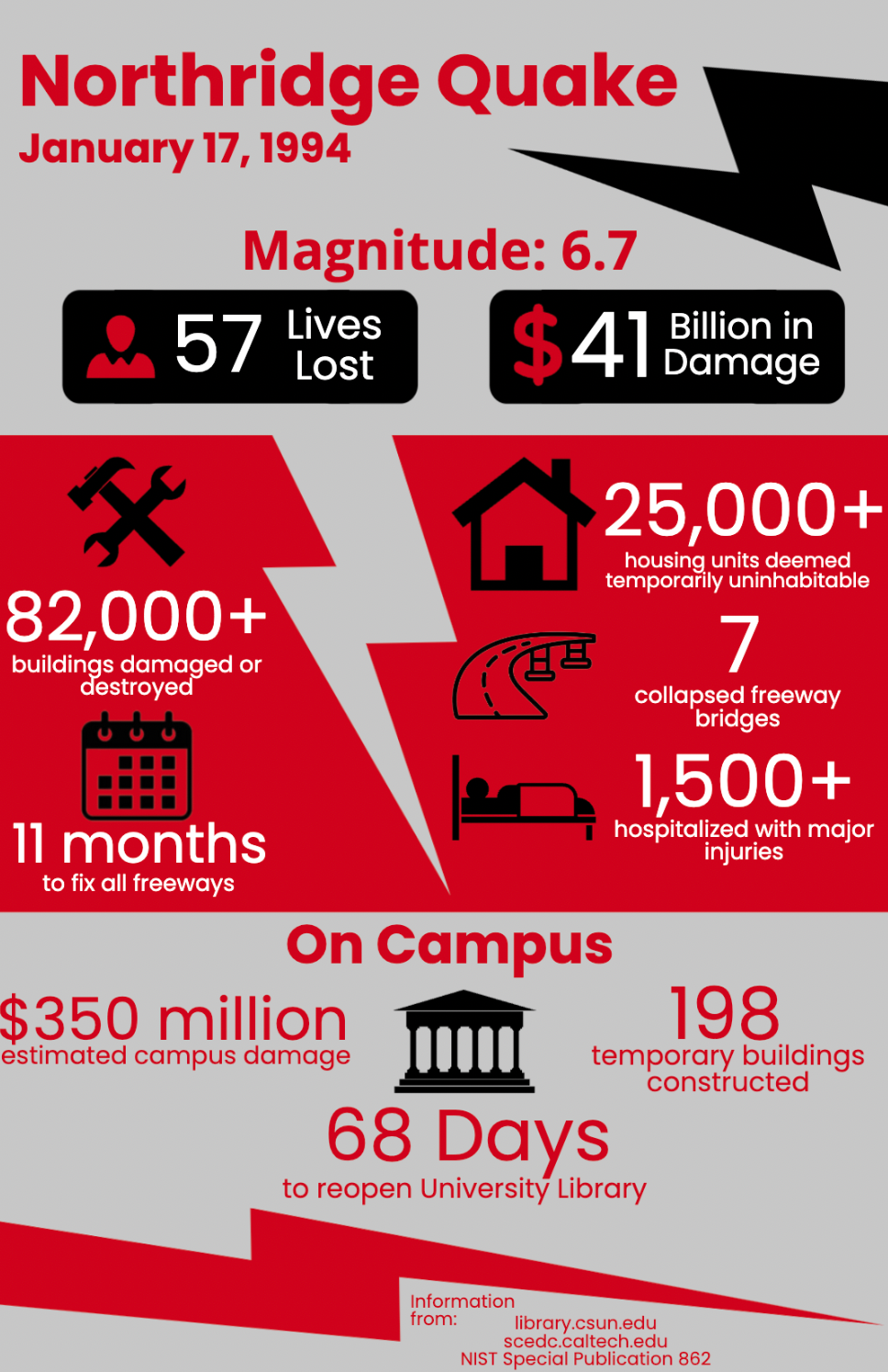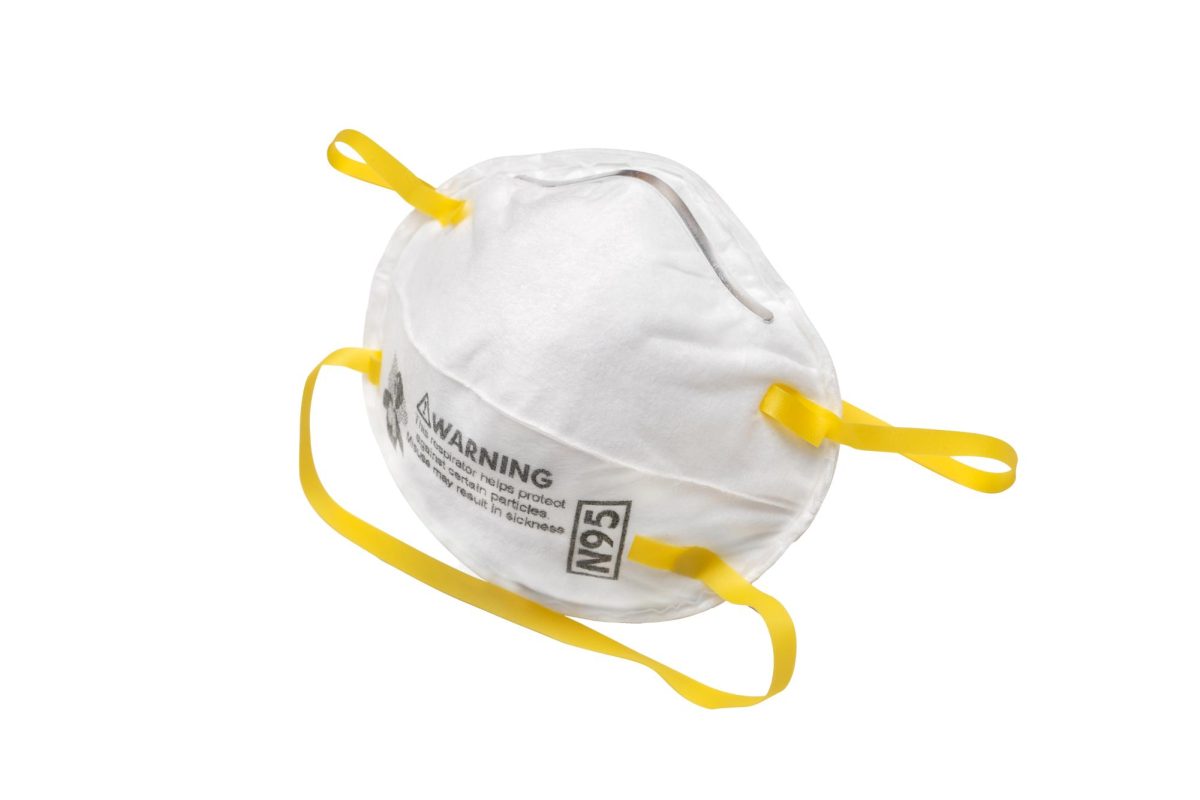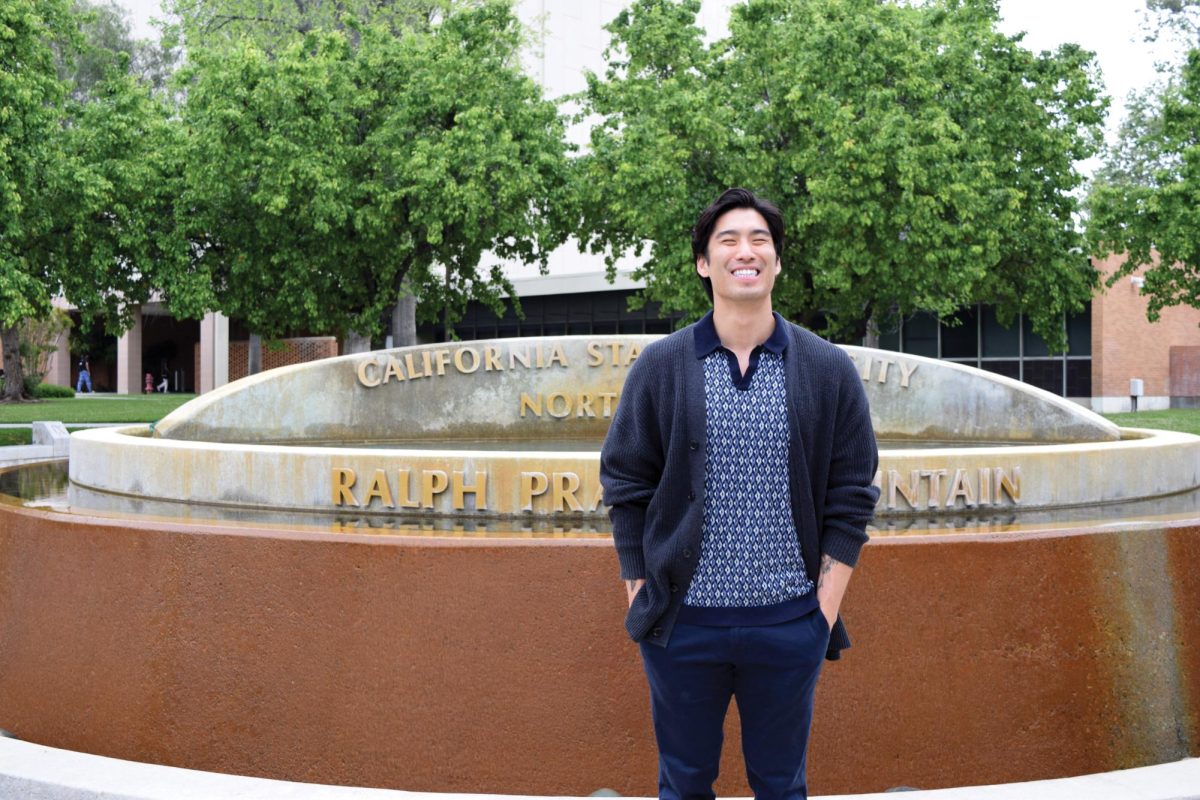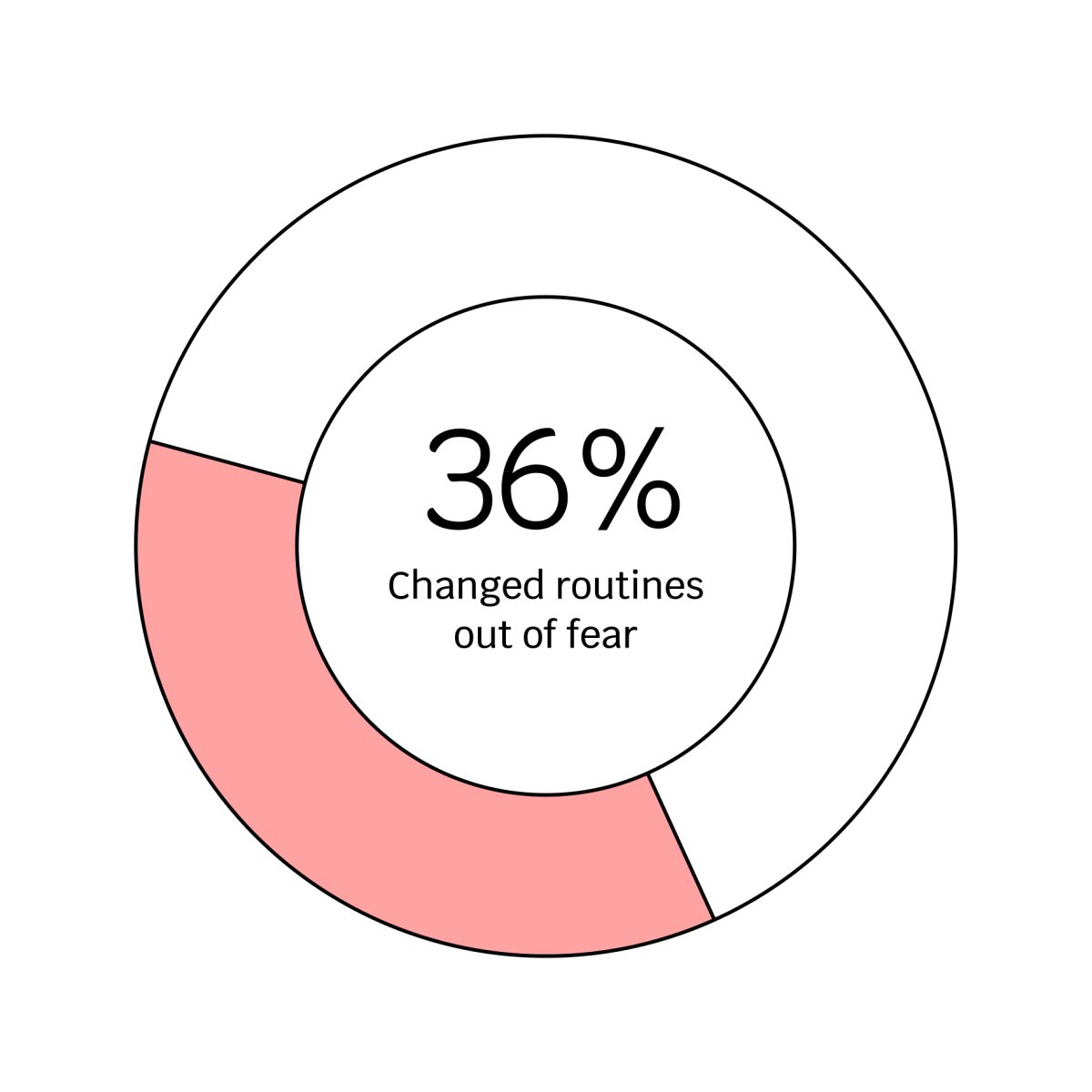At 4:30 a.m. on Jan. 17, 1994, the San Fernando Valley shook.
With a recorded magnitude of 6.7, the Northridge earthquake may not have been “the big one,” being neither of California’s two biggest earthquakes of the ’90s, but the densely populated location of the quake’s epicenter caused a significant loss of life and, at the time, the costliest earthquake in U.S. history.
Fifty-seven people died in the disaster, many in collapsing apartment complexes, according to the National Center for Earthquake Engineering Research. While the early morning timing of the earthquake on Martin Luther King Jr. Day significantly reduced possible casualties, damages equated to an estimated $41 billion in direct costs, according to William Petak, a professor at the University of Southern California.
State reports and inspections found 82,000 buildings damaged or destroyed. Of the surviving buildings, 9,441 were yellow-tagged, restricting entry. Another 3,060 structures were red-tagged, completely banning access. Federal reports centered on infrastructure identified 212 freeway sections needing repair, as well as multiple collapsed parking structures and bridges.
After the disaster, confusion was met with a swift emergency response. Up to 125,000 people were deemed temporarily unhoused due to the quake, largely due to the overrepresentation of apartment buildings among damaged structures, according to the Los Angeles Daily News. State reports note that this number was drastically reduced in the following weeks.
Some 11,800 people received hospital treatment. Most hospitals suffered little structural damage, a testament to earthquake preparedness programs in the state that continue to be expanded in the wake of the tragedy.
Residential buildings took years to rebuild, but most transportation infrastructure was fully repaired by December 1994, according to a report from the Project Management Institute.
Spring classes began two weeks late at California State University, Northridge, with many students filling temporary portable classrooms, as every building on campus needed repairs



